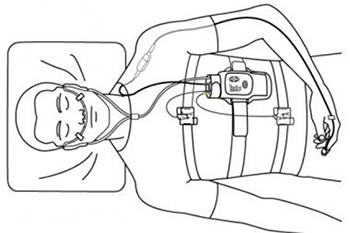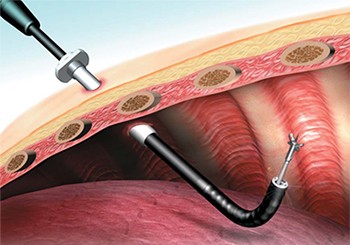 There are a number of factors that can occur early in a person’s life that could lead to lung problems later in life. These include not breast feeding, weight gain, a mother’s use of paracetomol during pregnancy, complications during childbirth and indoor and outdoor air quality.
There are a number of factors that can occur early in a person’s life that could lead to lung problems later in life. These include not breast feeding, weight gain, a mother’s use of paracetomol during pregnancy, complications during childbirth and indoor and outdoor air quality.
Pre-birth problems with lung development
The lungs may not always grow properly while a baby is in the womb. If the lungs do not grow properly, the baby has a low chance of survival once born. Abnormal lung growth is associated with 15-20% of deaths in newborn babies. This could be due to a number of reasons :
- Reduced space in the womb.
- Genetic problems.
- Lack of nutrients.
Vitamin A is an essential nutrient for helping the lungs to grow properly. Mothers who are lacking this vitamin are more at risk of having babies with abnormal lung growth.
If doctors identify restricted lung growth in advance, they can try to remove the problems and stimulate proper growth. This can be through various procedures :
Amnio-infusion
This procedure injects amniotic fluid through the mother’s belly and into the space around the baby. It provides extra fluid if there is not the correct amount. Having a lack of amniotic fluid can lead to the baby’s lungs not growing properly. Although this procedure can lead to more effective scans of the baby to help monitor growth, it has not been shown to improve lung growth.
Thoraco-amniotic shunting
This procedure inserts a device into the baby’s chest to drain off any abnormal build-up of fluid, which could lead to abnormal lung growth. It is usually performed too late in pregnancy to have a successful impact on abnormal lung growth.
Placing a balloon in the trachea
If the diaphragm of the baby has not grown correctly, surgery can be attempted to correct this in the womb, but a more promising procedure has been to insert a tiny inflatable balloon into the trachea, which prevents fluid escaping the lungs.
Low birth weight
Babies born with a lower-than-average birth weight are more likely to have lung problems :
- Lung infections.
- Wheezing.
- Problems with their lung function.
Preterm birth
Babies born preterm, or before the 36th week of pregnancy, have an increased risk of long-term problems with their lungs. Risk factors for premature birth include maternal infections and the age of the mother (aged under 17 or over 35).
The most common lung condition affecting preterm babies is a condition known as Bronchopulmonary Dysplasia (BPD), which occurs once a baby has been on oxygen for more than 28 days. It results in fewer and larger alveoli in the lungs and a reduced number of arteries, making breathing difficult.
BPD is characterised by rapid breathing, shortness of breath, and gasping and coughing to get more oxygen. It can be a temporary condition, but for some children symptoms can persist into adulthood, increasing the risk of developing chronic lung disease such as chronic obstructive pulmonary disease (COPD).
Passive smoke
Both unborn babies and young infants are at risk of exposure to passive smoke. Parental smoking is estimated to account for 20% of all asthma cases and bronchiolitis also occurs more often in babies of mothers who smoke. If a mother smokes while pregnant, her child is at risk of premature birth and being born underweight.
Once the baby is born, passive smoking can increase the risk of lung problems, including asthma, bronchitis and pneumonia as a child. Research has shown that in children less than 2 years, the risk for lung disease is increased by 72% if the mother smokes.
Lung Infections
If an infant develops a lung infection, they can grow up with a higher risk of lung problems later in life. The most common lung infection in infancy is called respiratory syncytial virus (RSV). Most babies develop RSV by the time they are 2 years old, and for most, the symptoms are similar to a common cold.
However, some babies develop a severe form of the infection and experience persistent coughing and wheezing, high fever and sudden gasping for breath that may require a stay in hospital. This can lead to problems later in life, such as asthma and wheezing. Some 30-50% of children who develop wheezing as a result of an infection as an infant go on to develop asthma.
Other lung infections that could lead to long-term lung problems include the adenovirus infection, human metaphneumovirus or rhinovirus.
Wheezy bronchitis
Babies who develop wheezy bronchitis are likely to experience a more rapid decline in lung function once they reach the age of 50. This may mean they are more susceptible to developing chronic obstructive pulmonary disease (COPD) later in life.
BURDEN
- Abnormal lung growth is associated with 15-20% of deaths of newborn babies.
- Parental smoking may account for 20% of all asthma cases in childhood.
- 20% of infants whose mothers smoked during pregnancy are admitted for bronchitis in their first 5 years compared to 15% in infants whose mothers didn’t smoke.
- Significantly more children who had RSV wheezed up to 5 years of age compared to those who didn’t have a severe form of the infection.
- The lung health of grandparents – whether or not they smoke – has a genetic impact on the lung health of their grandchildren.




